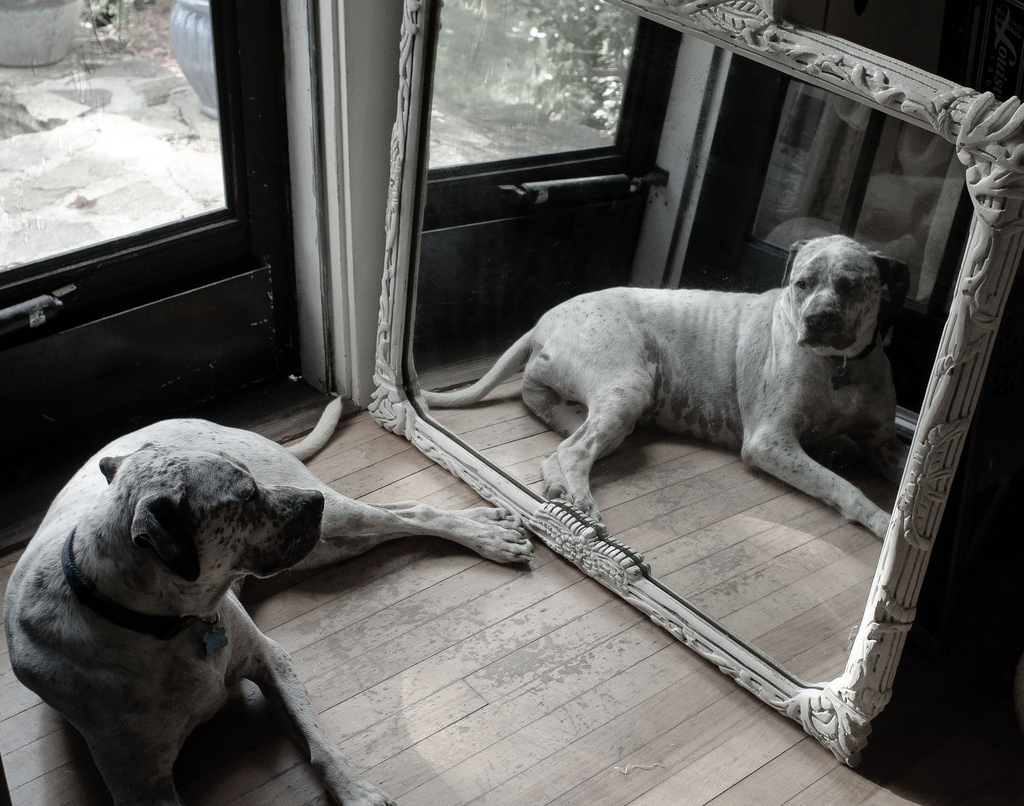 Self-awareness, or the ability to recognize one’s self as separate from one’s environment and others, is one line that has been used by some advocates to determine which animals should be granted legal personhood. Self-awareness is a seemingly concrete and manageable line to draw: If an animal is self-aware, then what happens to that animal must matter to him or her, and if it is not, then what happens to that animal cannot.
Self-awareness, or the ability to recognize one’s self as separate from one’s environment and others, is one line that has been used by some advocates to determine which animals should be granted legal personhood. Self-awareness is a seemingly concrete and manageable line to draw: If an animal is self-aware, then what happens to that animal must matter to him or her, and if it is not, then what happens to that animal cannot.
The difference in mind between man and the higher animals, great as it is, certainly is one of degree and not of kind." Charles Darwin
However, as Charles Darwin observed many years ago, the line in cognitive ability may be more of a grey area. And, perhaps more importantly, the way in which we attempt to determine self-awareness is potentially even more problematic. Using a test which has a high likelihood of giving a false negative (that is, determining an animal is not self-aware when the animal in fact is) could prove catastrophic in terms of treatment of species that fail to pass the tests we create for them.
Often, the mirror self-recognition test (MSR), developed in the 1970’s by psychologist Gordon Gallup, Jr., is used to provide evidence (or lack thereof) of self-awareness in animals and humans. In essence, an animal which has had an artificial dot placed in an area he or she is unable to see without the help of a mirror is introduced to a mirror. If the animal attempts to remove the artificial dot from its own body, the animal is said to be self-aware. If the animal fails to attempt to remove the dot, the animal is said to lack self-awareness. To date, bonobos, chimpanzees, orangutans, gorillas, humans, bottlenose dolphins, killer whales, Asian elephants, and Eurasian magpies have passed the test, while many more species have failed. But does this test actually tell us what we think it tells us? Here are three things you should know about the mirror test:
- Not all humans pass the mirror test.
Studies of MSR in humans have tended to focus on Western children who, as a group, demonstrate the desired set of behaviors when exposed to the mirror. However, the article Cultural Variations in Children’s Mirror Self-Recognition published in the Journal of Cross-Cultural Psychology compared results of the MSR test among human children from Kenya, Fiji, St. Lucia, Grenada, Peru, the United States, and rural Canada. The researchers found that there was a significant difference in the children’s response to the test. As the researchers expected from previous studies, children in the US and Canada exhibited self-recognition behaviors. However, the authors found that “markedly fewer children from the non-Western rural sites demonstrate such behaviors,” leading the researchers to conclude that “there are profound cross-cultural differences in the meaning of the MSR test, questioning the validity of the mark test as a universal index of self-concept in children’s development.” - The dot has to be relevant to the animal.
In 2006, several researchers tested the MSR on three elephants. While all three elephants interacted with the mirror in a manner that indicated some “self-investigation” only one elephant truly passed the MSR. The researchers believed that because grooming behavior is different in elephants and chimps (while chimps groom each other, elephants tend to dust bathe), elephants may be less concerned by the appearance of irregular debris on their body as compared to other primates. The researchers concluded that, “it may very well be that because of an elephant’s large body-surface area and the mud and sand it often carries around on its body, attention to detail is not a priority. A small paint mark may be trivial to them.” - Not all animals are highly reliant on visual cues to assess their environment.
What senses an animal uses to understand and interpret his or her environment are important to understand when interpreting results of MSR for different species. Not all species who appear to recognize other individuals rely on visual cues, and instead may rely heavily on scent or sound. As stated by ethologist Mark Bekoff, “many mammals differentiate between their own and others’ urine and glandular secretions, and many birds know their own and others’ songs.” Parrots have even recently been discovered to name their offspring and respond to these names throughout their lifetimes. However, if visual cues and recognition are not used by a species to recognize those around them, then is a test using visual recognition of self really an adequate way to test self-awareness in that species? If human self-awareness was determined by our ability to recognize our own scent, it is very possible that we too would be labeled as not self-aware.
While positive results to the mirror test may be sufficient in telling us that animals recognize themselves in the mirror, it remains debatable what these results actually tell us and whether these results correlate with empathy and other high level behaviors. Given the potential for false-negatives discussed above, the fact that many species have not passed the MSR test should be regarded carefully, as it may simply mean that the test we have created is simply not species-appropriate.
What do you think? Should we continue to use the MSR as the gold standard in self-awareness research?
